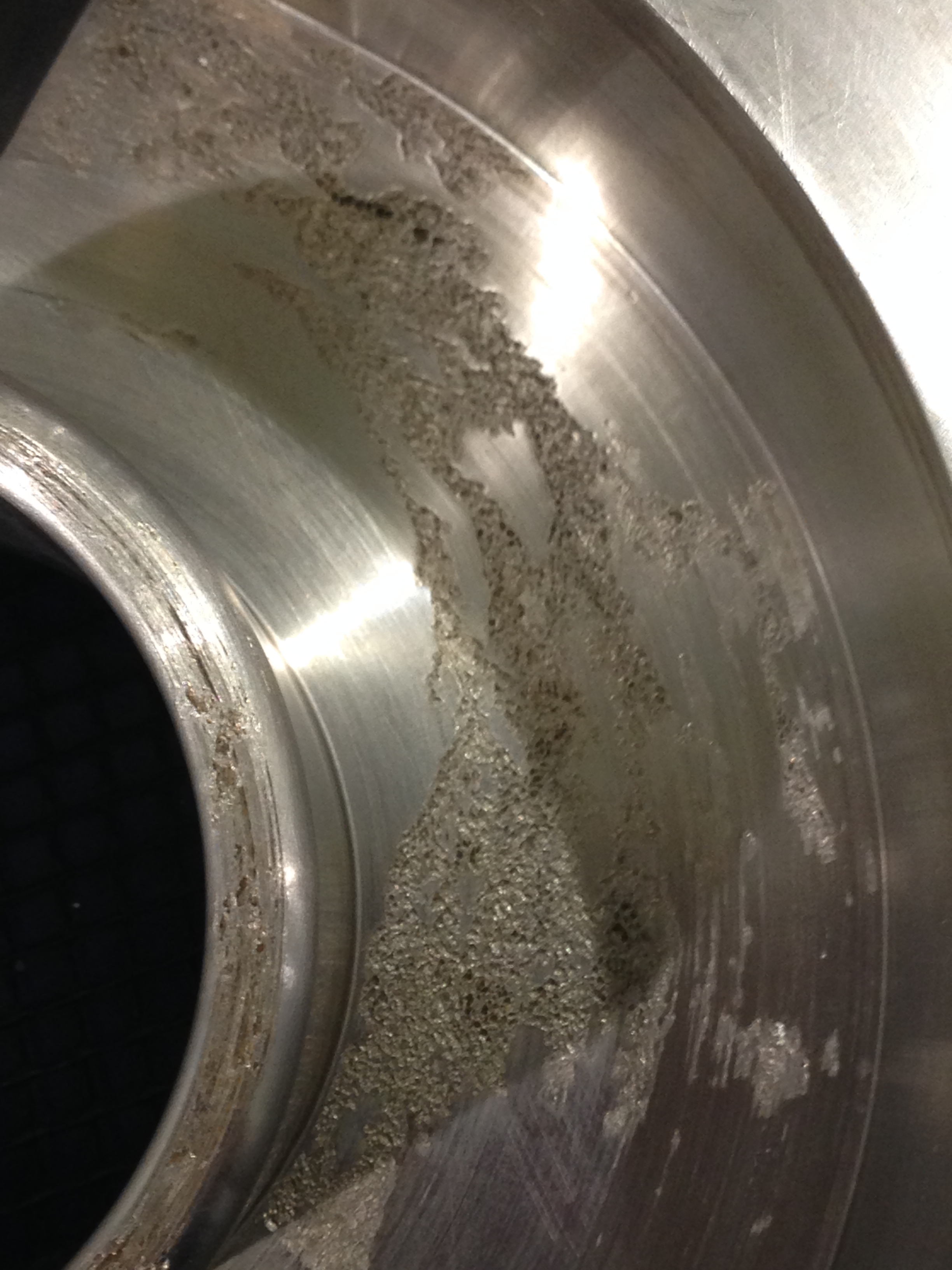Cavitation in Centrifugal Pumps- Why it may Sound like You’re Pumping Marbles
We have been putting sanitary centrifugal pumps into hygienic process applications for over 60 years. Over that period we have learned quite a bit about centrifugal pumps and sanitary centrifugal pumps in particular. We plan to write quite a few posts on this topic covering such things as sanitary centrifugal pump performance curves, seal configurations, VFD applications and many more. But we thought we would start with the single biggest issue we are continually questioned about regarding sanitary centrifugal pumps, namely cavitation.
We would like to start this blog by clearing up a common misconception: pumps do not cavitate, the system cavitates. Pumps just get caught in the middle. It is more correct to say that pumps are “in a state of cavitation” or that the pump is “in cavitation.” In sum, cavitation is the formation and subsequent collapse of vapor bubbles inside the pump. It occurs because the absolute pressure of the liquid falls beneath the liquids vapor pressure. When these bubbles collapse with enough frequency, it often sounds like marbles or rocks are going through the pump. If cavitation is severe enough, the bubbles can actually remove metal on pump surfaces, ruining the highly polished surfaces and leaving the pumps vulnerable to corrosion. While cavitation is most often characterized as being a result of low NPSHA, there are actually five different types of cavitation that this blog will address.
Vaporization Cavitation
This represents about 70% of all cavitation in hygienic pumps. Vaporization cavitation can be thought of as “classic cavitation”. We most often see this type of cavitation when the net positive suction head of the system (NPSHA) falls beneath the net positive suction head required by the pump (NPSHR). When this happens in a centrifugal pump, the impeller eye, which creates an area of extremely low pressure actually boils the fluid being pumped as mechanical energy, i.e. pressure, is imparted into the vapor. The fluid is then forced back above its vapor pressure. This causes the collapse of the bubbles (with forces of up to 150,000 psi). With this kind of cavitation, damage can be seen behind the impeller blades and near the eye of the impeller. To correct this, try the following:
-Lower fluid temperature
-Raise the suction level of the pump
-Slow the pump down
-Use an inducer
-Use a booster pump
Internal Recirculation
This type of cavitation occurs in low flow situations when pumps are run too far to the left side of their system curve, creating a restriction for fluid exiting the pump. The liquid is forced to recirculate through the pump. This causes rapid heating of the swirling fluid and leads to fluid vaporization when passing through the tight pump tolerances at high speeds. Damage on an open impeller style pump, such as the Waukesha C Series, pitting is seen on the OD of the impeller tips. On closed and semi closed style impellers, such as Waukesha’s 200 and S200 series pumps, wear is seen between the back of the impeller and the casing. To correct this, the discharge pressure needs to be relaxed. This may mean adjusting valves downstream, checking filters to make sure they are clean, and ensuring check valves are installed in the correct orientation.
Vane Passing Syndrome
We don’t see this type of cavitation as often in high purity pumps due to their design, however, this type of cavitation is still worth addressing. Vane passing syndrome occurs when the OD of the impeller vanes passes too close to the discharge neck, or cutwater, of the pump casing. This often happens when an oversized impeller is used or if the impeller is coated with Armoloy or CDC are applied (we talked about these in a previous post). The exceptionally tight tolerances lead to recirculation, heating of the liquid, and rapid movement through high and low pressure zones. Damage can be seen on the OD of the blade tips and near the discharge of the pump casing.
Air Aspiration
This form of cavitation occurs when air is drawn into the system. This often occurs in systems with a large number of joints. If gaskets aren’t seated properly or if you are using a “non-elastomer”, such as Teflon, it is possible to draw air into the system. If there are air pockets in the suction line, this is also a source of air. Products that are prone to foaming can also introduce air into the system. Evidence of this form of cavitation is similar to vaporization cavitation.
Turbulence Cavitation
This form of cavitation occurs when vortexes form in the suction flow, sharp elbows are placed too near the suction line, or suction flow has sufficiently high Reynolds number to deem it “turbulent”. Turbulence cavitation also appears like vaporization cavitation and the easiest way to correct it is with proper inlet piping. Future posts will address good piping practices, specifically for installing new pumps.
Conclusion
To conclude, pumps don’t cavitate, systems cavitate. Pumps just get caught in the middle. Hopefully this gives you a good place to look the next time your sanitary centrifugal pump starts making excessive noise or is underperforming. Future posts will address good piping practices and additional considerations when addressing poor performing pumps.
Holland Applied Technologies








